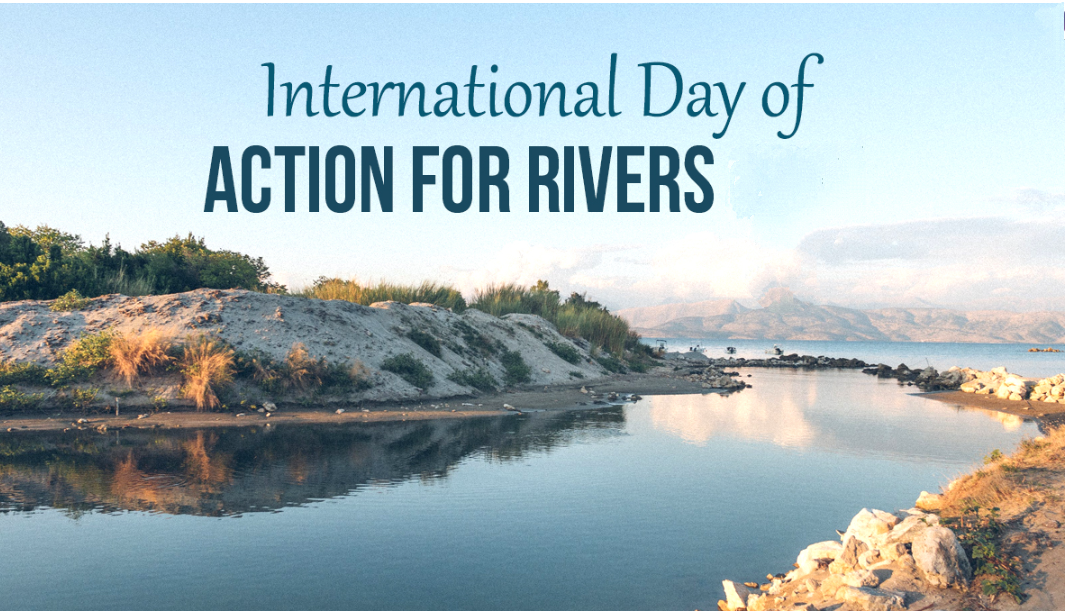International Day of Action for Rivers: A Global Movement for Water Protection
Introduction to the International Day of Action for Rivers
The International Day of Action for Rivers is celebrated on March 14th each year to raise awareness about the importance of rivers and to advocate for the protection and preservation of these vital water resources. This day serves as a call to action for communities, environmentalists, policymakers, and activists around the world to come together and protect rivers from pollution, damming, over-extraction, and other threats that endanger their ecological health and biodiversity.
History of the International Day of Action for Rivers
The International Day of Action for Rivers was first celebrated in 1997 as part of the larger efforts by International Rivers, an organization that works to protect rivers and the rights of communities who depend on them. The day was initially introduced to bring global attention to the consequences of large-scale river damming projects and the negative impact they have on local communities, ecosystems, and indigenous people.
The movement has grown significantly over the years, with thousands of groups and individuals worldwide participating in various forms of protest, education, and advocacy. Through this day, people aim to promote river conservation, sustainable water management, and awareness about the environmental and social issues associated with the degradation of rivers.
Key Objectives of the International Day of Action for Rivers
- Raise Awareness: The main goal of this day is to inform the public about the importance of rivers in sustaining ecosystems, providing clean water, supporting biodiversity, and enabling human survival.
- Advocate for River Protection: The day encourages global citizens to stand up for the protection of rivers against destructive activities such as damming, mining, industrial pollution, and deforestation.
- Promote Sustainable Water Management: Sustainable management of water resources is a central theme, as rivers are essential to agriculture, drinking water, and industrial processes.
- Celebrate River Communities: The day also celebrates the culture, traditions, and livelihoods of communities that depend on rivers for sustenance, transportation, and spiritual practices.
Observance of the Day
The International Day of Action for Rivers is typically marked by a variety of activities and events, including:
- Protests and Marches: People around the world participate in peaceful demonstrations, marches, and rallies to draw attention to the threats facing rivers and to demand immediate action from governments and corporations.
- Educational Campaigns: Environmental organizations, schools, and universities conduct outreach programs, public talks, and awareness campaigns to educate the public on the importance of river conservation.
- Community Clean-ups: Local communities may organize river clean-up drives to remove waste and pollution from rivers, which helps reduce environmental hazards for wildlife and humans alike.
- Art and Culture Events: Festivals, exhibitions, and cultural performances often take place to celebrate rivers and raise awareness about their significance.
- River Tours and Eco-Trekking: Eco-friendly river tours or trekking expeditions may be organized to highlight the beauty of rivers and the importance of preserving them.
Significance of the International Day of Action for Rivers
Rivers are not just water bodies—they are the lifeblood of the environment. They provide drinking water to over 2 billion people worldwide, serve as habitats for thousands of species, and support agriculture, transportation, and energy generation. The International Day of Action for Rivers is important for several reasons:
- Environmental Impact: Rivers are ecosystems that support a wide range of wildlife, plants, and microorganisms. Degradation of rivers can lead to loss of biodiversity, soil erosion, and disruptions in the food chain.
- Human Dependence on Rivers: Many communities around the world rely on rivers for drinking water, irrigation, and fishing. When rivers are contaminated or dried up, it can have severe consequences for food security, public health, and local economies.
- Climate Change and Rivers: Climate change is exacerbating the challenges that rivers face. Rising temperatures, erratic rainfall patterns, and more frequent droughts are threatening the flow of many rivers, leading to water scarcity and floods in some regions.
- Social Justice: The construction of dams and water projects often disproportionately affects vulnerable communities, including indigenous people, farmers, and fishermen who depend on rivers for their livelihoods. This day helps draw attention to the social justice aspect of river conservation.
Key Issues Facing Rivers
- Pollution: Rivers around the world are being polluted by industrial waste, agricultural runoff, plastic waste, and untreated sewage. Pollution harms river ecosystems, making water unsafe for drinking and negatively impacting local wildlife.
- Damming and Diversion: Large-scale dams and river diversion projects disrupt the natural flow of rivers, leading to environmental degradation, loss of aquatic species, and the displacement of communities. These projects are often criticized for benefiting industries or urban areas at the expense of local communities and ecosystems.
- Over-extraction: Excessive extraction of water for agriculture, industry, and domestic use reduces the flow of rivers, causing water scarcity, soil salinization, and loss of aquatic habitats.
- Climate Change: Altered rainfall patterns and rising temperatures caused by climate change are affecting river ecosystems. Increased frequency of floods, droughts, and melting glaciers are contributing to the instability of river systems.
How Can You Get Involved?
- Educate Yourself and Others: Learn about the local rivers in your region and the challenges they face. Share this knowledge with your community through social media or local talks.
- Support River Conservation Organizations: Join or donate to environmental organizations working to protect rivers, such as International Rivers, WWF, and River Network.
- Advocate for Policy Change: Use your voice to call for policies that protect rivers, such as regulations on pollution, sustainable water use, and conservation efforts.
- Practice Sustainable Water Use: Reduce your water consumption and avoid using harmful chemicals that might end up in rivers and waterways.
Conclusion
The International Day of Action for Rivers plays a crucial role in raising awareness and mobilizing action to protect rivers across the world. Rivers are essential for life, and their health directly impacts ecosystems, communities, and the climate. By observing this day and taking action, we can work together to preserve these vital waterways for future generations.










